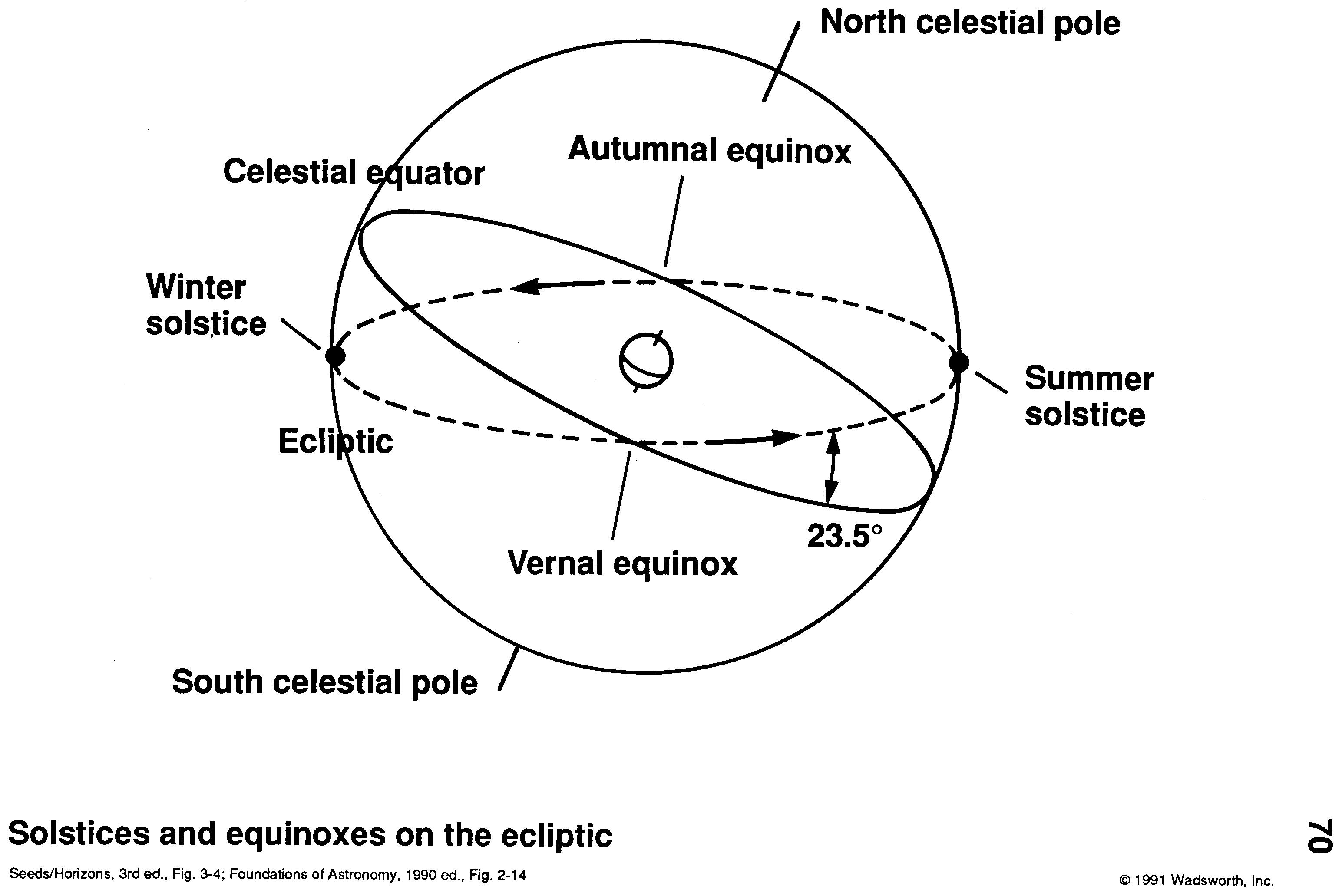This year’s March equinox occured at 1:14 a.m. EDT today (which meant it was still March 19 on the West Coast!). It’s “earlier” this year than it usually is, because someone stuck an extra day into last month.
Whenever it occurs, though, at the equinox the center of the sun’s disk is aligned with the first point of Aries, which, although it is actually in the constellation Pisces, is still called the first point of Aries and defines the start of spring in the northern hemisphere, and fall in the southern.
Another way to think about the first point of Aries (and its counterpoint on the opposite side of Earth’s orbit, the first point of Libra) is as ascending or descending nodes of the celestial sphere. Earth (and the other planets) orbit in the plane called the ecliptic, but since Earth’s axis is tilted by 23.5° with respect to that orbital plane, the celestial equator isn’t coplanar with the ecliptic. Instead, it intersects at two points; once going “up” (ascending), at the September equinox, and once going “down” (descending), at the March equinox.
It might be easier to visualize with the aid of this nice diagram on the lunar and planetary laboratory’s website:

The sun is, of course, not actually in the constellation Aries when it’s at the so-called first point of Aries, nor is it in Libra at the first point of Libra. Those names were set thousands of years ago, when the sun actually did appear against the backdrop of those constellations at the equinoxes; since then, thanks to the precession of the equinoxes, these “fixed” points where Earth’s orbit and the ecliptic intersect have advanced quite a bit (from Aries back to Pisces in March, and from Libra back into Virgo in September).
And, as always on the equinoxes, please remember that despite the etymology of the name, the day and night are NOT of equal length on these days. I quote from a quote I quoted back in September 2009:
Due to Earth’s axial tilt, whenever and wherever sunset occurs, sunset is always to the northwest from the March equinox to the September equinox, and to the southwest from the September equinox to the March equinox. Sunsets occur precisely due west on the equinoxes, and the duration of day and night are approximately equal on the equinoxes for all viewers on Earth (precisely 12 hours if measured from the geometric (unrefracted) centre of the sun).
As sunrise and sunset are calculated from the leading and trailing edges of the sun, and not the centre, the duration of “day” is slightly longer than “night”. Further, because the light from the sun is bent by the atmospheric refraction, the sun is still visible after it is geometrically below the horizon.

